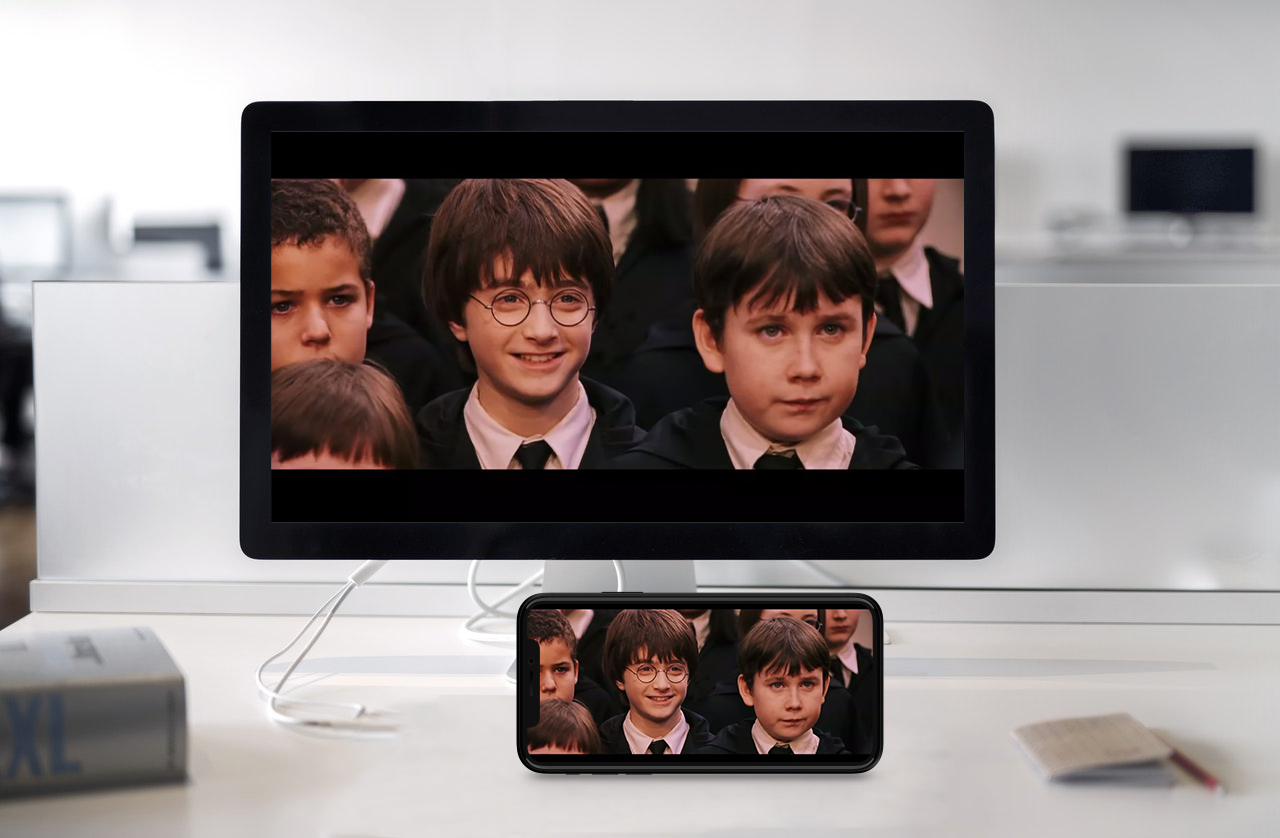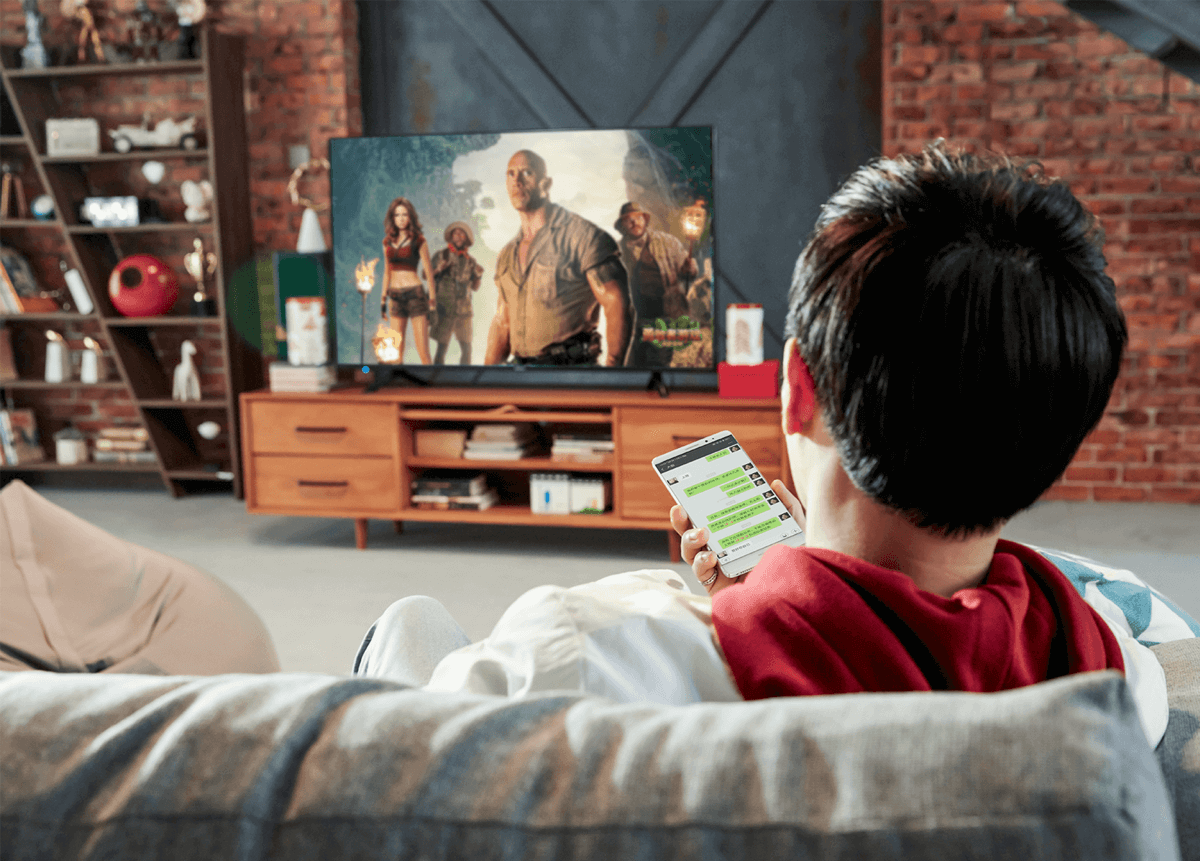Phone Screen Mirroring: Let Your Small Screen’s Brilliance Shine on the Big Screen
Our phones store a huge amount of content—from important work documents and client files to travel videos, family photos, course materials, and study notes. Phone screen mirroring technology acts as an invisible channel, easily transferring this content from your small screen to devices like TVs, projectors, and large conference displays. This makes content presentation clearer, sharing more convenient, and interaction smoother.
I. Flexible Connection Methods for Diverse Scenarios
(I) Wireless Connection: Break Free from Cables
You can achieve wireless screen mirroring just by connecting your phone and the large display device to the same Wi-Fi network. On an Android phone, pull down the control center and tap “Wireless Display.” On an Apple phone, select “Screen Mirroring” in the control center. Find the name of the large display device and tap to connect. The whole process takes less than 3 seconds. In a meeting room, employees don’t need to carry various data cables; they can quickly mirror their proposals from their phones to the large display for more efficient discussions. In the living room, a family can mirror a movie from their phone and enjoy an immersive experience from the comfort of the couch.
(II) Hotspot Direct Connection: For Non-Network Environments
When you’re outdoors or in a temporary location without Wi-Fi, the large display device will automatically generate an encrypted hotspot. Your phone can connect to this hotspot and mirror the screen. During an outdoor team-building event, everyone can mirror and share photos and videos from the activity. At an exhibition, staff can quickly mirror product videos to a display screen to attract visitors, all without being limited by network availability.
II. All-Device Compatibility for Unobstructed Content Flow
Regardless of whether your phone runs Android or iOS, you can smoothly mirror its screen to various large display devices. Design sketches from a Huawei phone, Keynote presentations from an Apple phone, or album videos from a Xiaomi phone can all be mirrored without format conversion, preserving their original quality and layout. In cross-platform collaboration, a client document from an Android phone can be mirrored to a large conference display running Windows, while product images from an Apple phone can be synced to a Mac’s external monitor. The differences between devices are no longer a barrier to content flow.
III. High-Definition and Stable Transmission for Quality Details
(I) High-Definition Quality for Clearly Visible Details
It supports 1080P Full HD and 4K Ultra HD screen mirroring, with sharp, clear image details and true-to-life color reproduction. When playing an HD movie, the characters’ expressions and the scene’s lighting look incredibly lifelike on the big screen. When displaying complex data in a spreadsheet, every number and line is clearly presented, making it easy for viewers to accurately get the information.
(II) Low-Latency Transmission for Smooth Audio-Visual Sync
The transmission process has low latency and excellent audio-visual synchronization. When watching a live sports event, the mirrored picture has virtually no delay compared to the live action, capturing the excitement of a goal at the moment it happens. In a video call, the other person’s voice and video are synchronized, making remote communication more natural. Even when multiple devices are connected simultaneously, the transmission remains stable, preventing issues like lag or screen distortion.
IV. Practical Interactive Features for an Enhanced User Experience
(I) Reverse Control from the Big Screen for More Convenient Operation
While mirroring, you can directly control your phone from the large screen. In a meeting, use the large screen’s touch interface to flip through a PPT on your phone and annotate key data. In class, a teacher can modify student assignments submitted via phone directly on the classroom’s large screen, with changes syncing in real-time back to the student’s device, avoiding the hassle of passing phones back and forth. At a family gathering, an elder can use the TV remote to swipe through a photo album on their phone, making it easier to look at old photos.
(II) Background Mirroring for More Efficient Multi-tasking
When mirroring, you can exit the mirroring interface on your phone to do other things, like sending messages or replying to emails, without interrupting the playback on the large screen. After a child mirrors an animated show to the TV, the parent can continue working on their phone without interference. In a meeting, after mirroring a proposal document, you can discreetly look up supplementary information on your phone, avoiding screen switches that might interrupt the presentation.
V. Covering Multiple Scenarios to Unleash Content’s Value
(I) Office Scenarios: A Tool for Efficient Collaboration
In an impromptu meeting, you can mirror a proposal document from your phone to the large conference display. Colleagues can use the large screen’s annotation feature to provide feedback, which syncs in real-time back to your phone’s memo app, instantly documenting the discussion’s outcomes. In a remote meeting, the presentation content mirrored from your phone and the video conference feed can be displayed in a split-screen, making remote collaboration feel like a face-to-face discussion and significantly improving decision-making efficiency.
(II) Educational Scenarios: An Assistant for Interactive Classrooms
Teachers can film an experiment process with their phones and mirror it to the classroom’s large display for the whole class to observe, ensuring every student can see the details. Students can submit classwork via their phones, and an excellent answer can be “pinned” to the large screen for display, boosting their motivation to learn. During an outdoor sketching class, a teacher can mirror a reference image to a portable projector, allowing students to copy it more intuitively.
(III) Home Scenarios: A Link for Shared Entertainment
On weekends, you can mirror a variety show from your phone to the TV, and the family can gather to watch. You can use the large screen’s touch interface to participate in interactive quizzes, making the atmosphere even more fun. At a friend’s gathering, you can take turns mirroring games from your phones, with multiple people competing on the same screen for a more exciting experience. During holidays, you can mirror a collection of family photos to relive heartwarming moments together.
With its simple operation, broad compatibility, and stable performance, phone screen mirroring technology allows content from small devices to break free from size limitations and deliver greater value on a large screen. Whether for efficient collaboration at work or happy sharing in life, it makes every content presentation easy, smooth, and enjoyable.